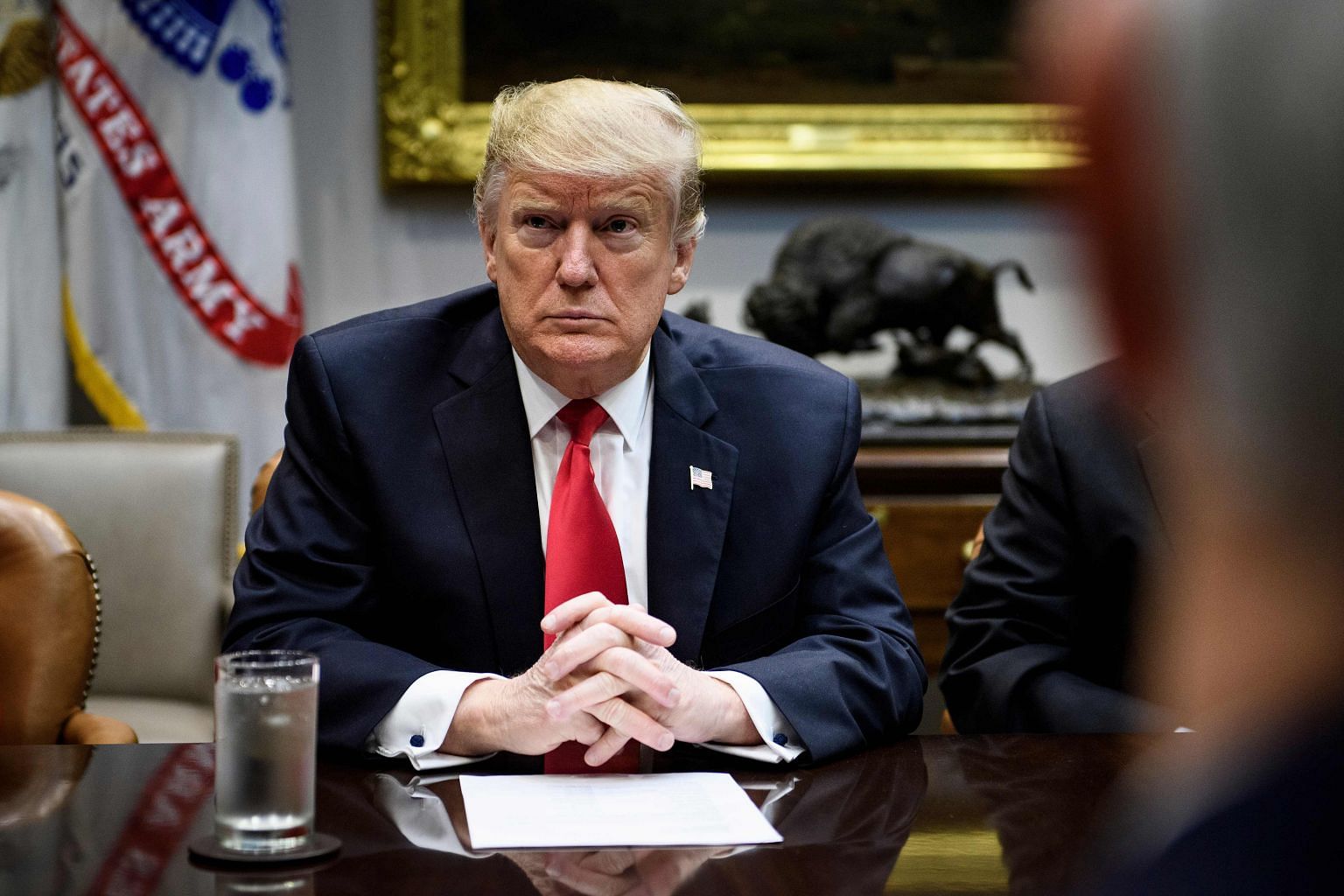US government shutdown: Why the Trump administration caved in
Sign up now: Get ST's newsletters delivered to your inbox

Trump (above) still threatened a new shutdown, or a state of emergency, if there is no breakthrough in negotiations.
PHOTO: AFP
Rebecca Lynne Tan
Follow topic:
The US federal government reopened on Friday (Jan 25) after President Donald Trump brought a temporary end to the longest government shutdown in US history.
The three-week spending deal reached with congressional leaders paves the way for tough talks with lawmakers about how to address security along the US-Mexican border.
The Senate and House of Representatives both passed the deal by unanimous consent on Friday. The White House later confirmed that Mr Trump had signed it into law.
But while Mr Trump climbed down in agreeing to reopen government without first getting US$5.7 billion (S$7.7 billion) in border wall funds, he still threatened to renew hostilities with a new shutdown, or a state of emergency, if there is no breakthrough in the negotiations.
Here's a look at why the president caved in:
1 AVIATION DISRUPTION
Some air traffic controllers and screening officers who had been working without pay since the start of the shutdown did not report for duty, triggering significant flight delays across north-eastern United States on Friday (Jan 25). Wider concerns about travel were also affecting bookings.
2 TAX FILING CHAOS
The shutdown caused a backlog of millions of documents and unanswered calls ahead of the US tax filing season which starts tomorrow.
The Trump administration may have ordered 46,000 Internal Revenue Service employees back to work, without pay, earlier this month, but not everyone complied.
A New York Times report on Friday said less than half of those recalled to process tax refunds and take calls showed up for work.
As a result, five million written correspondences had gone unanswered and only 18 per cent of calls had reached a representative, the report added.
3 WASHINGTON IN PAIN
In the Washington area, an estimated one in six workers had been affected.
The shutdown was also affecting economic growth in a region that grew 2.1 per cent in 2017, more than the 1.1 per cent growth it saw in 2016.
4 LACK OF ECONOMIC DATA
The impasse halted the release and publication of necessary economic indicators and statistics including wholesale inventories, trade balance and new home sales.
These could have an impact on markets and how the Federal Reserve will move interest rates.
5 KNOCK-ON EFFECT
No permits, no approvals, no listings on the stock exchange. Businesses were in limbo. Contractors that supply services to affected agencies were also losing money.
The federal court system warned it would exhaust funding this month. Food subsides for low-income families were expected to run out by next month.
An analysis by ratings agency Standard & Poor's indicated that the US economy lost at least US$6 billion (S$8.12 billion) in the five weeks the government was partly shuttered - more than the US$5.7 billion Mr Trump had requested for the wall.

